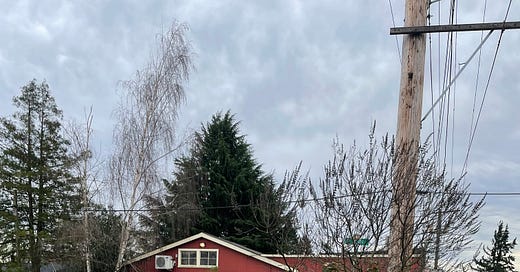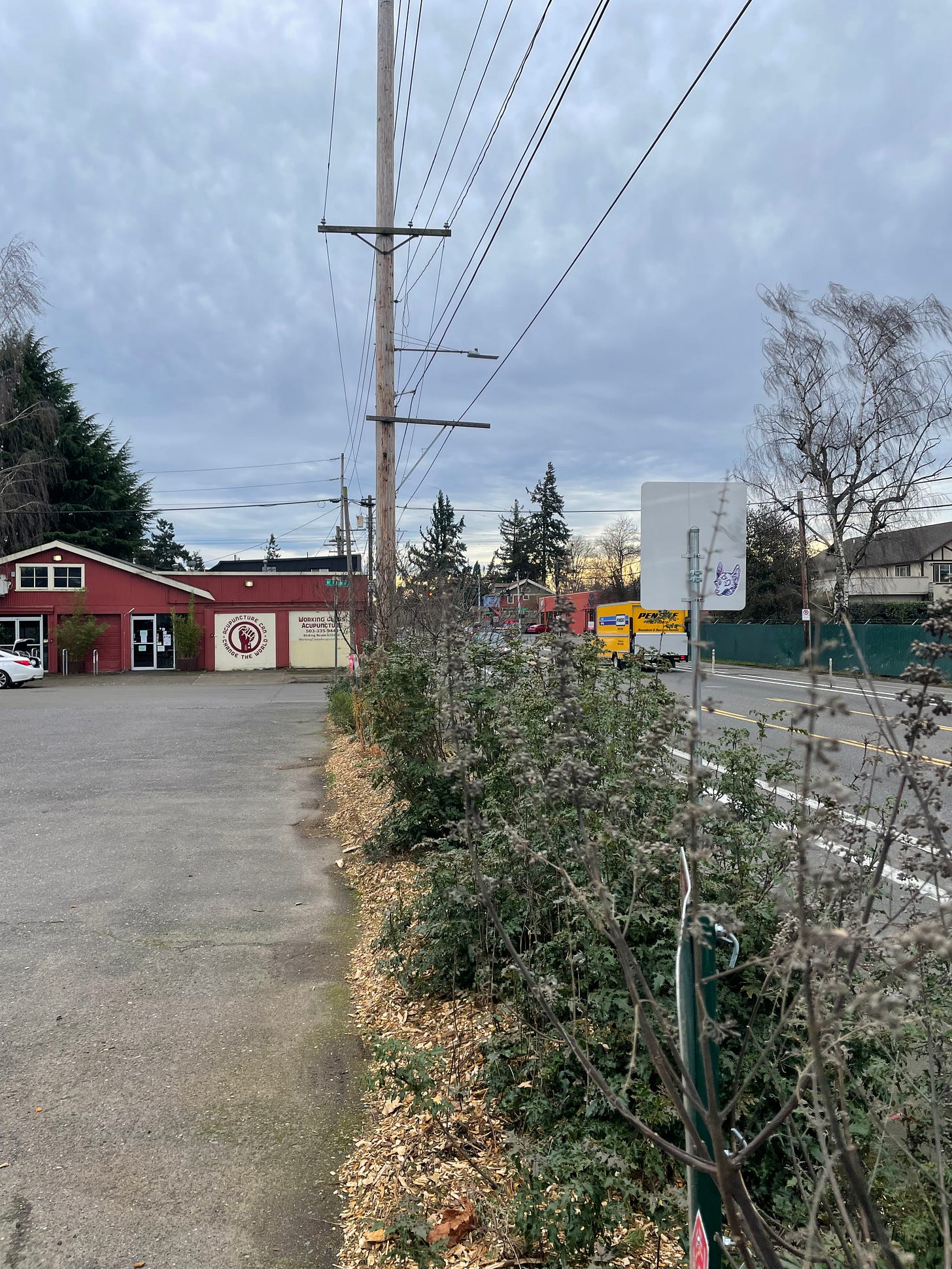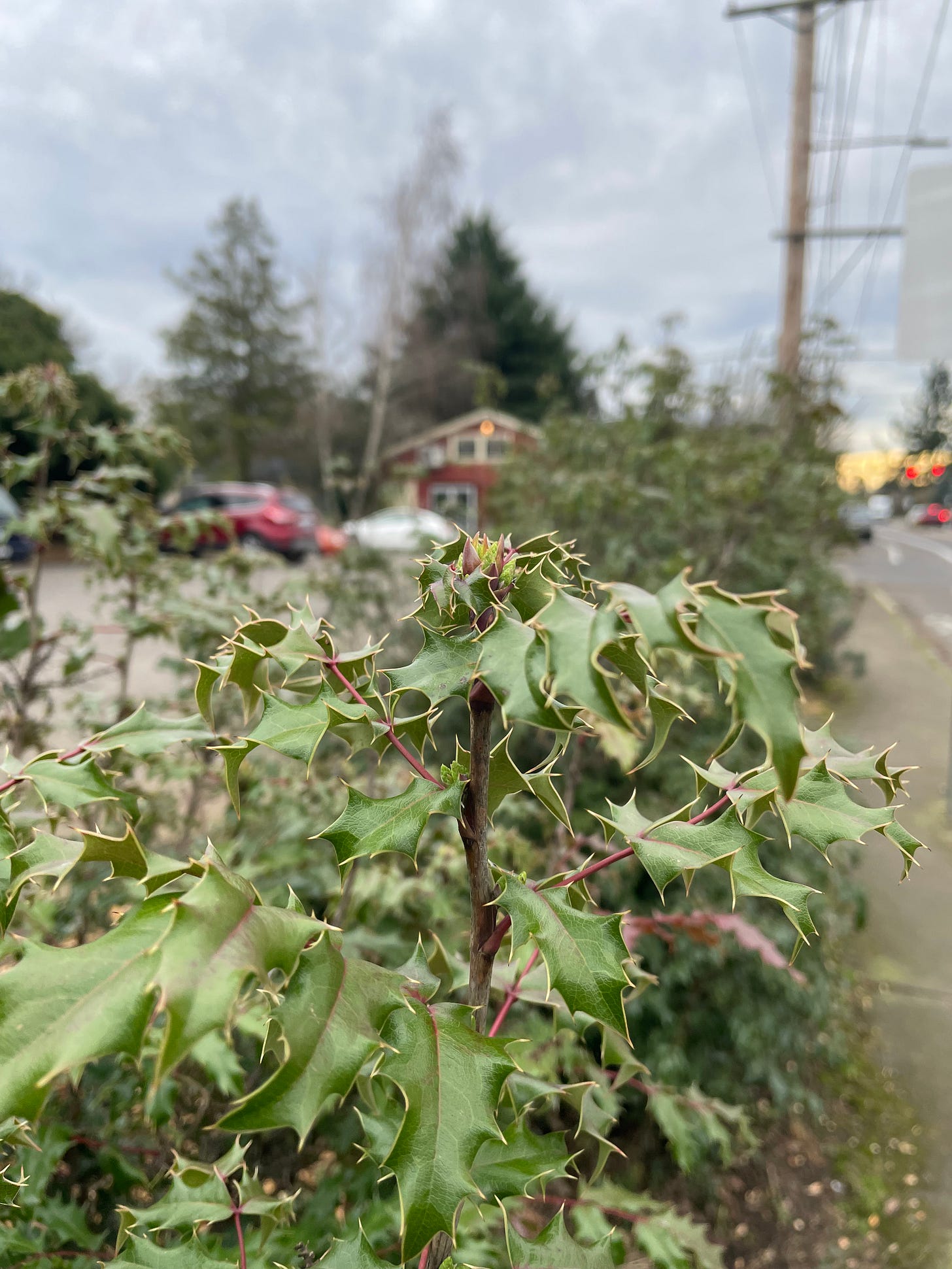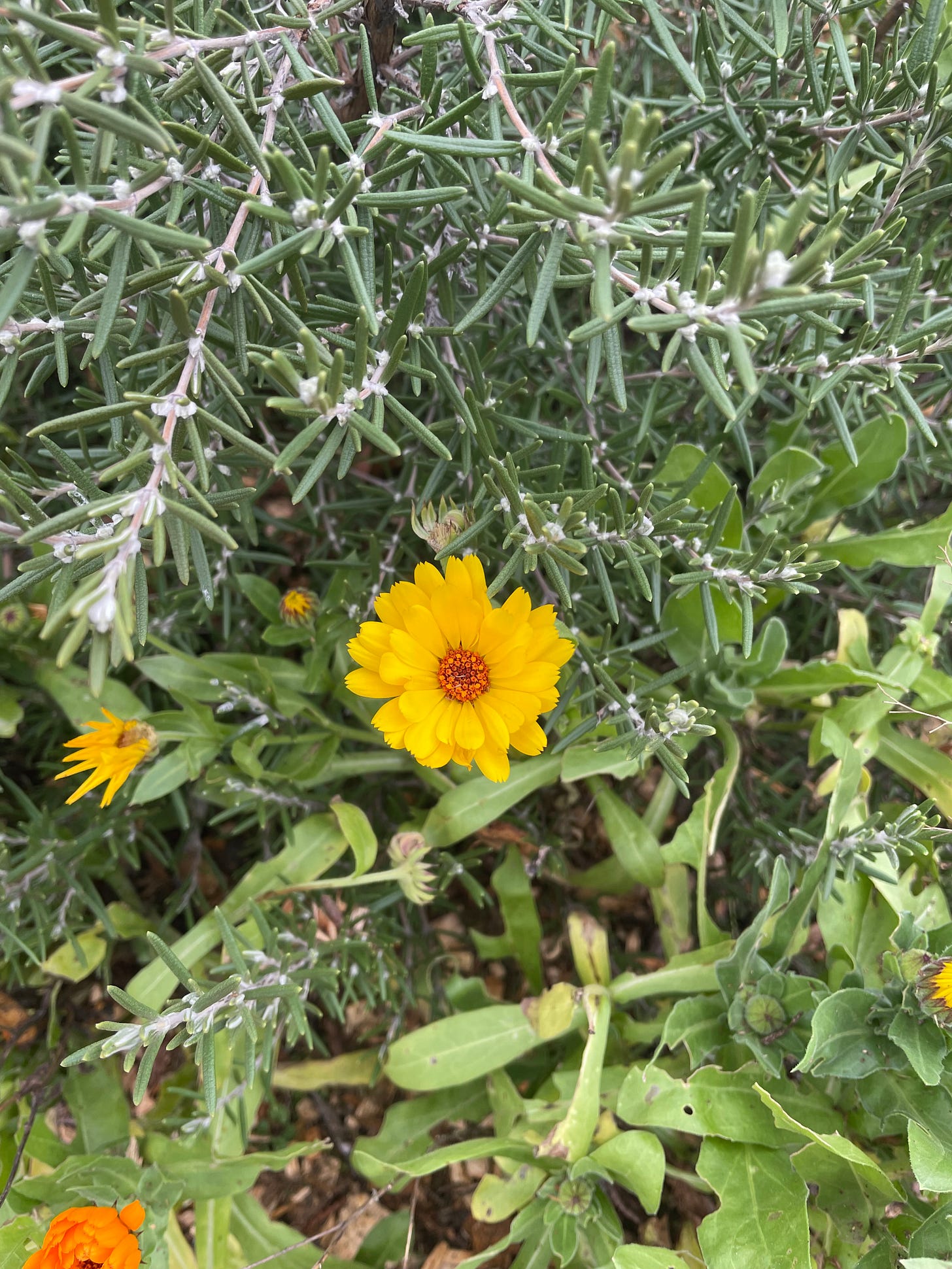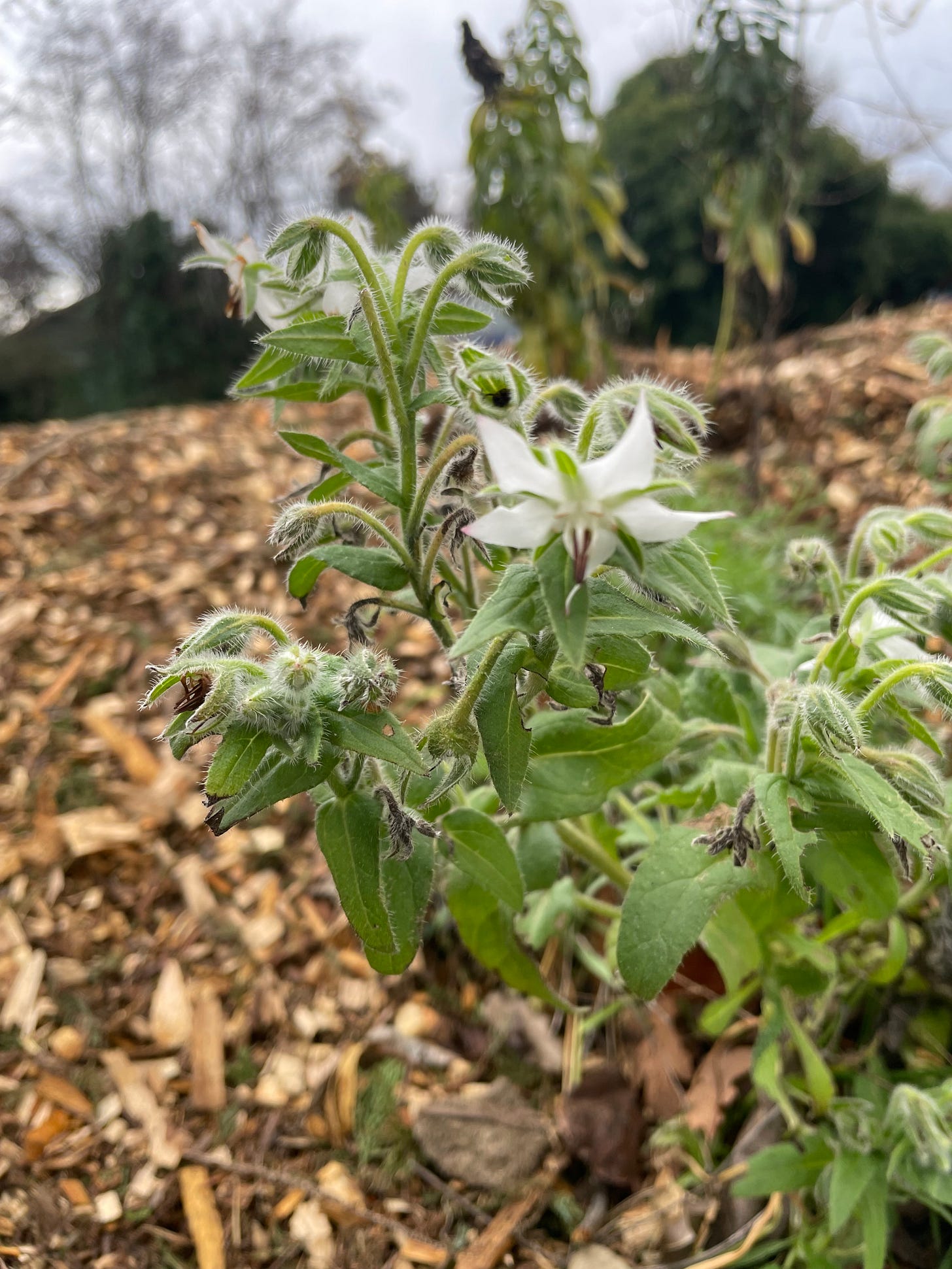WCA Cully has a garden. Until the spring of 2010, it was just a strip of weeds between the parking lot and the sidewalk that our landlord mowed (infrequently, with an ancient lawnmower that belched black smoke). It’s surrounded by asphalt, people throw trash there, sometimes cars back over it on their way out of the lot. The urban gardening term for this kind of space is hellstrip.
Our hellstrip has seven species of native plants, plus other tough perennials like euphorbia, salvia and rosemary. It attracts hummingbirds, finches, butterflies and bees. Making a hellstrip garden on Cully Boulevard was a lot like making a small business on Cully Boulevard, and also a lot like making an acupuncture school. As the Buddhists say, how you do anything is how you do everything.
The first thing I did in 2010, with the help of some volunteers, was to weed it (not nearly as comprehensively as I should have, I didn’t know what I was doing) then put down compost, because the soil was terrible, mostly rocks. The East Multnomah Soil and Water Conservation District hosts an annual native plant sale with inexpensive bare root plants (going live this year on January 16th, check out what they’ve got!). I asked the volunteers there for recommendations for tough plants, and they said: Oregon grape, the tall kind.
They were right. I planted ten Oregon grapes and almost all of them survived, despite being backed into more than once by cars. They’ve spread out and they’re almost a hedgerow now.
Oregon grape is Oregon’s state flower; it’s important for pollinators because it’s one of the first plants to bloom in early spring. If you look closely at the photo below you can see it’s getting ready now — that’s a flower bud at the top of the plant, surrounded by all those spiky leaves.
Bare root plants are easy to plant, they cost very little, and people don’t steal them out of the ground, because for a long time they just look like sticks. We learned the importance of this later on when Nick of Creative Landscapes offered to help with the hellstrip. He planted three vitex trees (not in bare root form) in the spring; two of them were immediately dug up and stolen. He replaced them and they were dug up and stolen again, along with their irrigation buckets. (“Who steals a plastic bucket with a hole in it?” he said, shaking his head.) After that, he waited until winter to replant them so they looked more like sticks. This is why one of our three vitex trees is much taller than the other two; it’s a year and a half older. Right now they all look like sticks, but in the summer they’re beautiful, covered with purple flowers (and bees).
Nick also planted self-sowing, drought tolerant annuals: cornflowers, California poppies, and calendula, which winter over; I added some borage. He just re-mulched everything, which is important for cooling the soil in the summer.
I think a lot about what it’s like to make something out of nothing, especially when your resources are limited — and how different this is from the way our culture glamorizes entrepreneurship. I don’t like the term “bootstrapping”, as in the capitalist feat of pulling yourself up by your bootstraps, so maybe I could use “hellstripping” instead? Which also sounds like something you might find in Portland, where we have the most strip clubs per capita of any US city — but I digress.
A lot of acupuncturists won’t like this analogy, but here goes: acupuncture occupies a place in US society not unlike a hellstrip. What we’ve got to work with is not exactly prime healthcare real estate: it’s liminal, rocky, under-resourced, underappreciated. Acupuncturists tend to get indignant about that. It’s interesting, how people respond to finding themselves in a disadvantaged position.
I plant things.
Not necessarily skillfully — a better gardener, someone with higher expectations, might have gone about this very differently. Portland is full of gorgeous gardens, and WCA Cully’s hellstrip isn’t going to win any awards. But it’s alive, and it’s habitat, and in its own scruffy way it’s contributing to the community.
Jersey and Sonya and I (POCA Tech’s three co-directors) were talking recently about how we’ve learned that when it comes to acupuncture, availability creates demand and not the other way around. A lot of people who benefit from acupuncture the most are in no position to be hunting high and low for it, or choosing from the acupuncturist section of “Portland’s Top Docs.” If you want to treat people who don’t have a lot of resources, you have to make yourself available to them; you can’t wait for them to ask.
The butterflies and the hummingbirds didn’t show up at the hellstrip until there was something for them to eat. I couldn’t send them a survey to establish that there was demand ahead of time. And when they did appear, it was after a long period where there was nothing much to see. All the action was invisible and underground, while the surface level looked ugly, messy, unfinished — despite requiring a whole lot of labor. There’s no hose connection outside at WCA Cully so everything had to be hand watered, for years. Of course now I wish I’d taken more pictures, but I didn’t because 1) there wasn’t much to take pictures of, and 2) I wasn’t sure my hellstrip project was going to work.
Ultimately it did work because of nature itself — nature was all look at what I can do! Even though it had to do it slowly, over the course of a decade, while people tossed their trash on top of it. It makes me think of the Doris Lessing quote: Whatever you’re meant to do, do it now. The conditions are always impossible.
Stay tuned for pictures of the hellstrip in spring.

